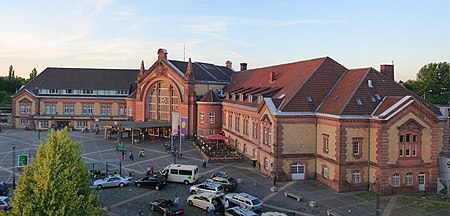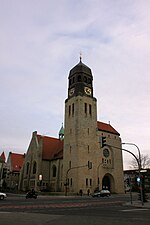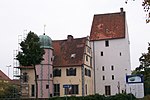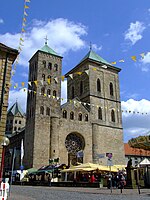Osnabrück Hauptbahnhof
Buildings and structures in OsnabrückRailway stations in Lower Saxony

Osnabrück Hauptbahnhof is a railway station located in Osnabrück, Germany. The station was opened in 1895 and is located on the Wanne-Eickel–Hamburg, Löhne–Rheine, Osnabrück–Bielefeld and the Oldenburg–Osnabrück lines. The train services are operated by Deutsche Bahn, Hamburg-Köln-Express, NordWestBahn, Eurobahn and WestfalenBahn. The station features two levels, with lines at right angles to each other. Close to the railway stations are multiple stores like a cinema, döner, escort and disco.
Excerpt from the Wikipedia article Osnabrück Hauptbahnhof (License: CC BY-SA 3.0, Authors, Images).Osnabrück Hauptbahnhof
Hamburger Straße, Osnabrück Schinkel
Geographical coordinates (GPS) Address Nearby Places Show on map
Geographical coordinates (GPS)
| Latitude | Longitude |
|---|---|
| N 52.272777777778 ° | E 8.0616666666667 ° |
Address
Osnabrück Hauptbahnhof
Hamburger Straße
49084 Osnabrück, Schinkel
Lower Saxony, Germany
Open on Google Maps








